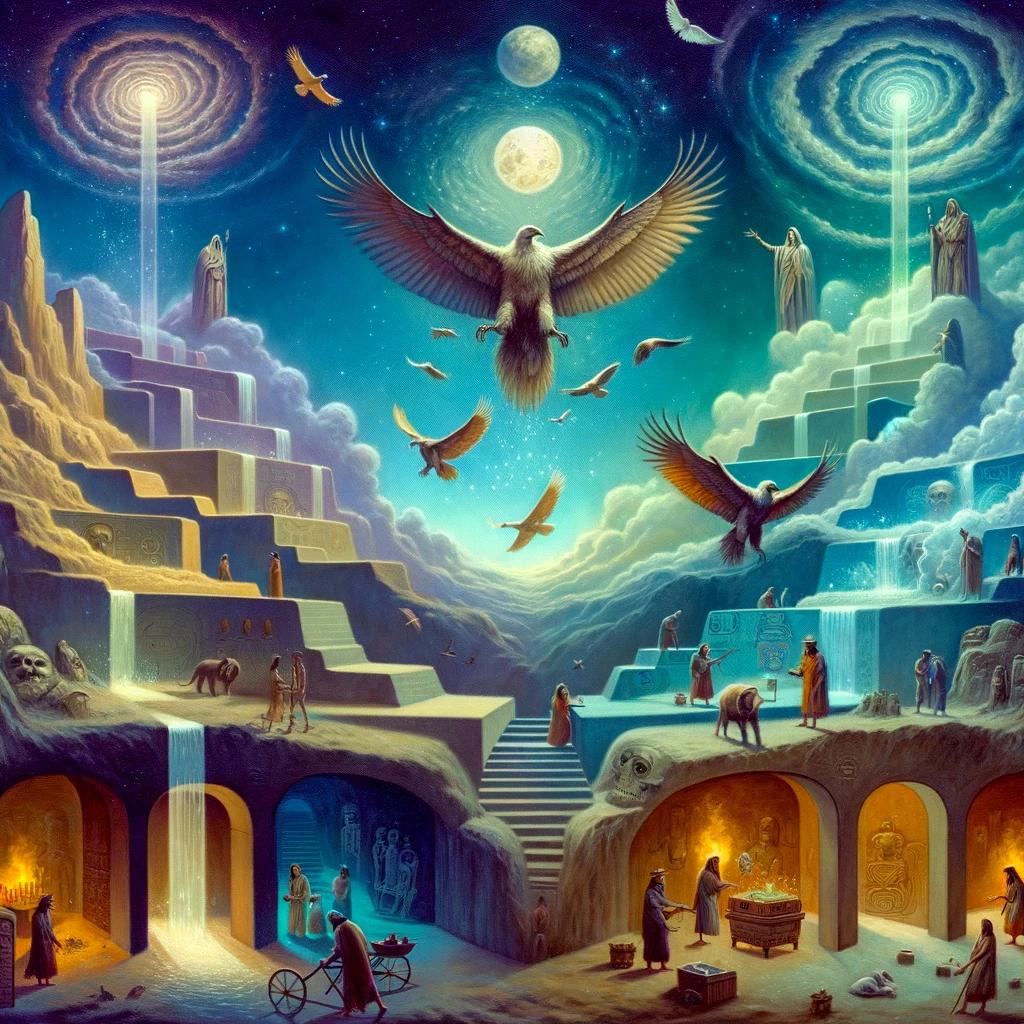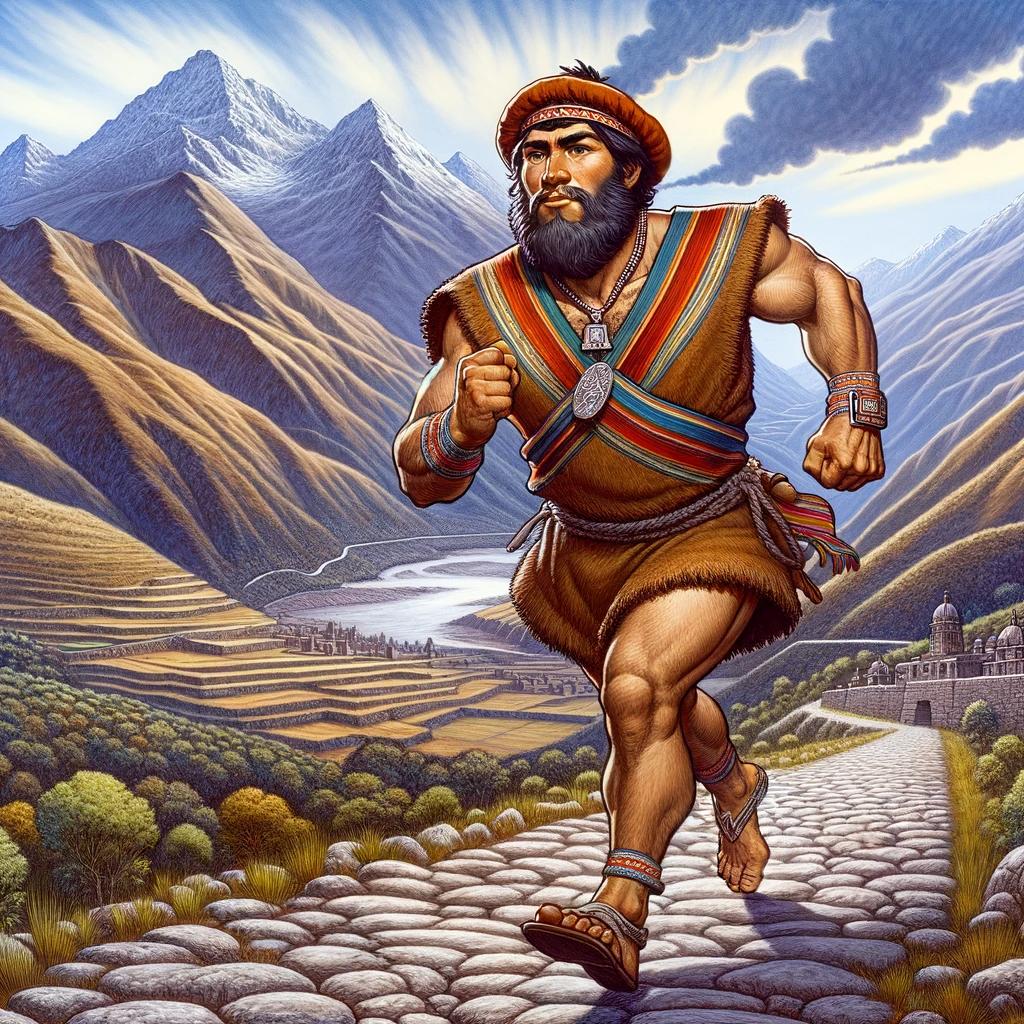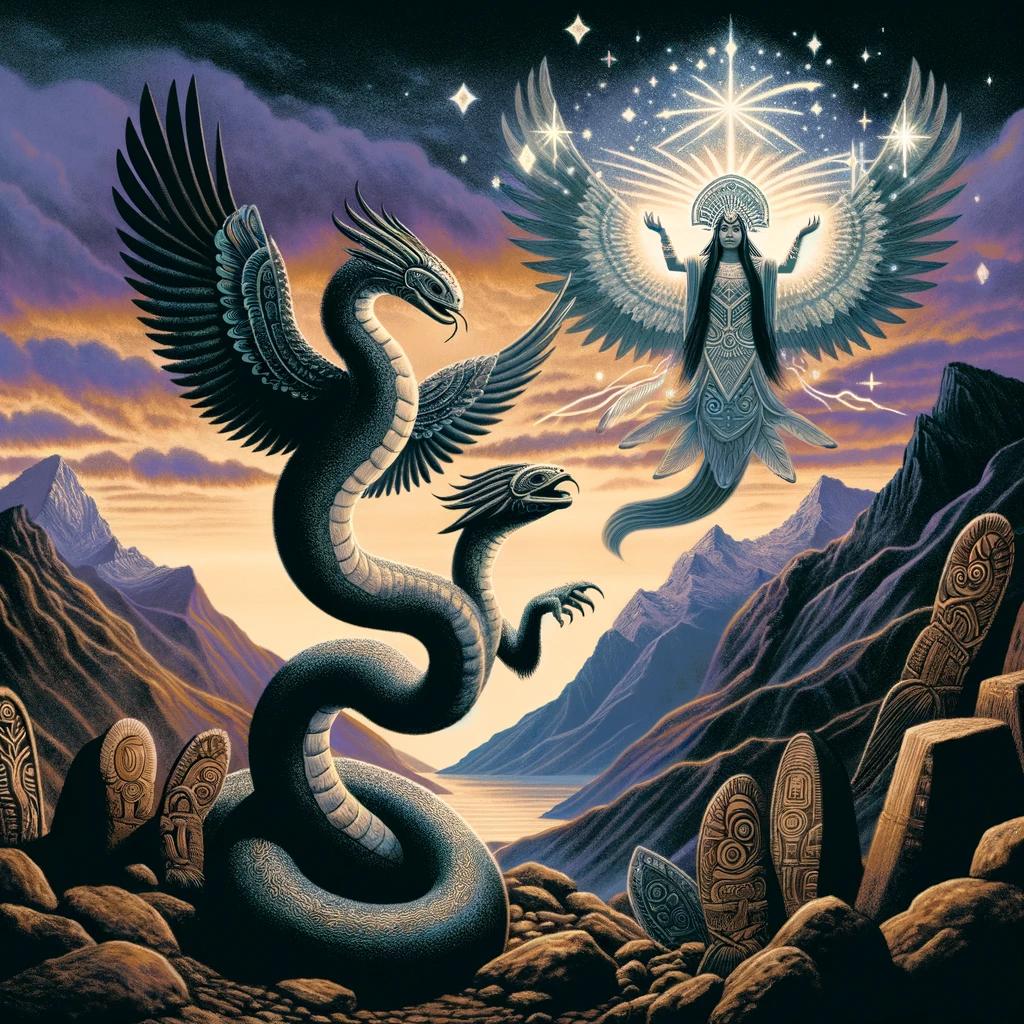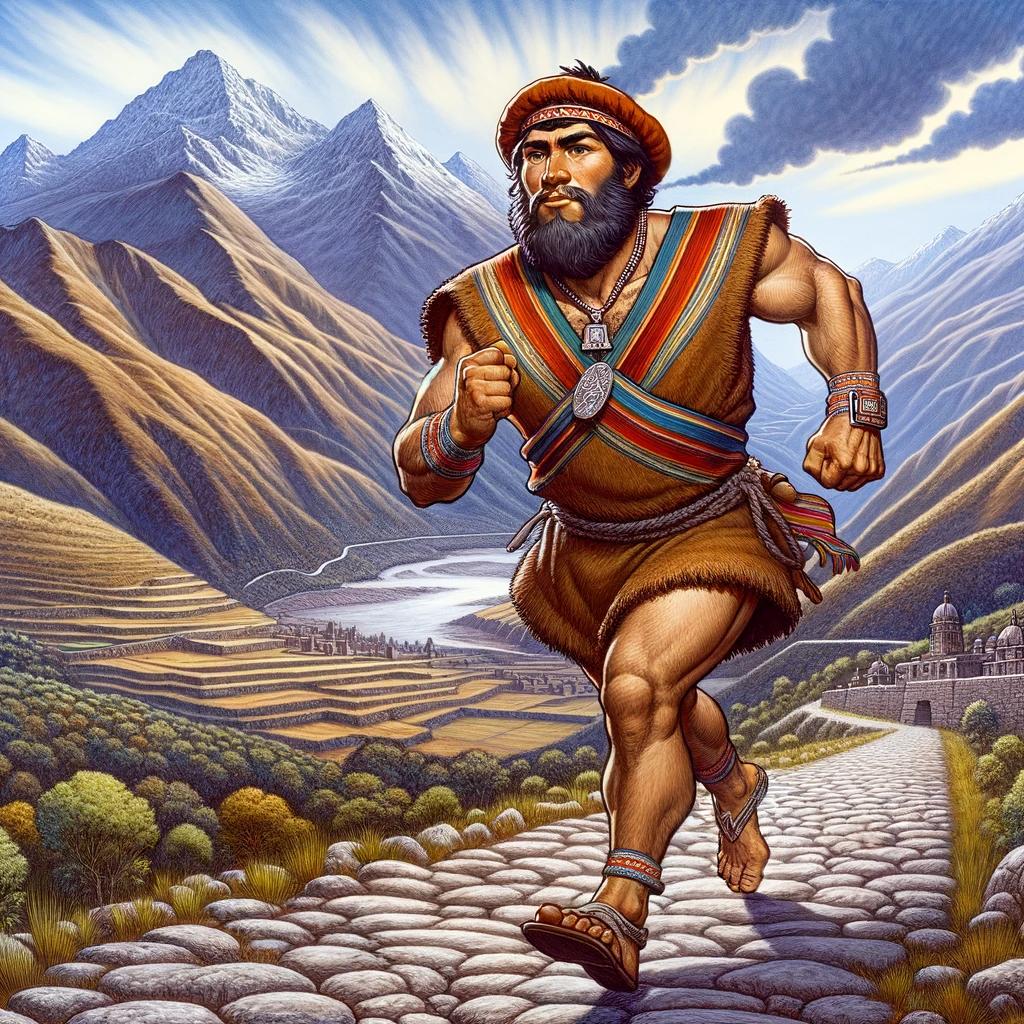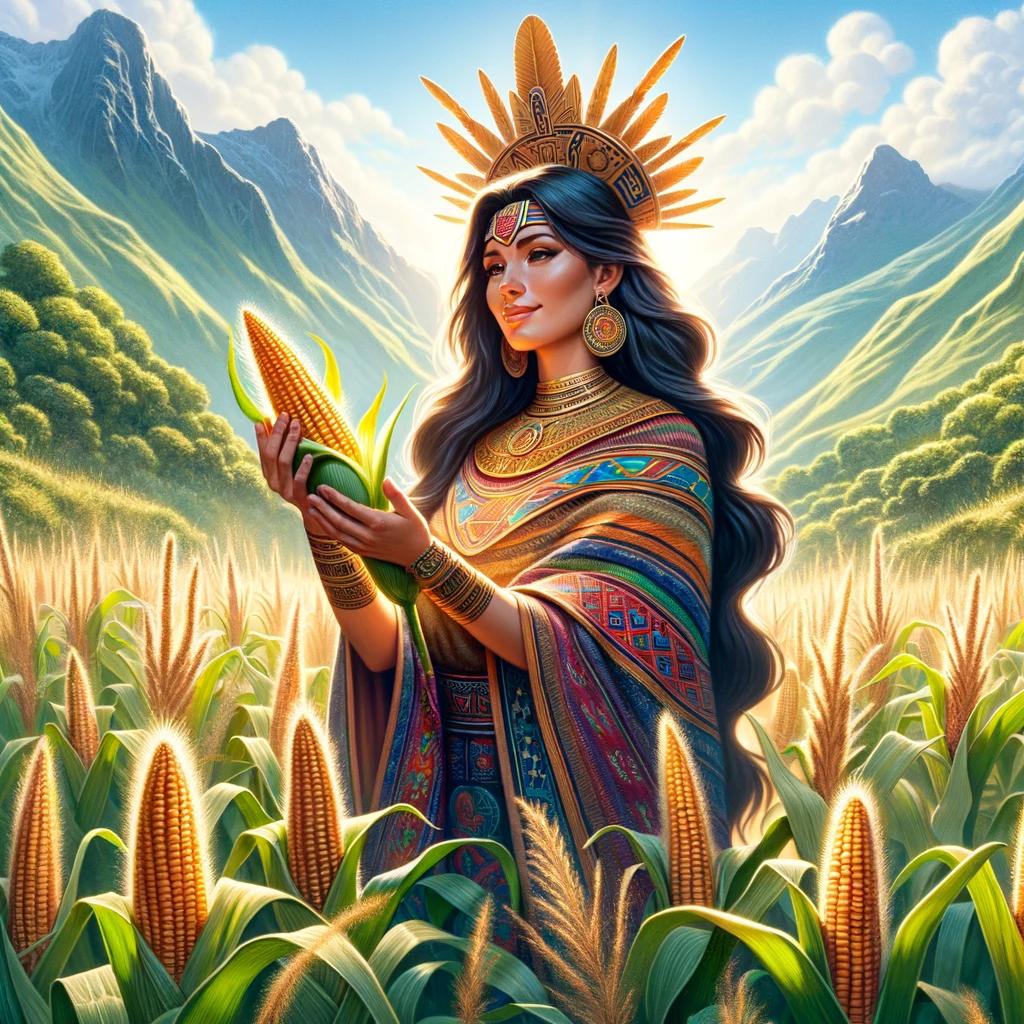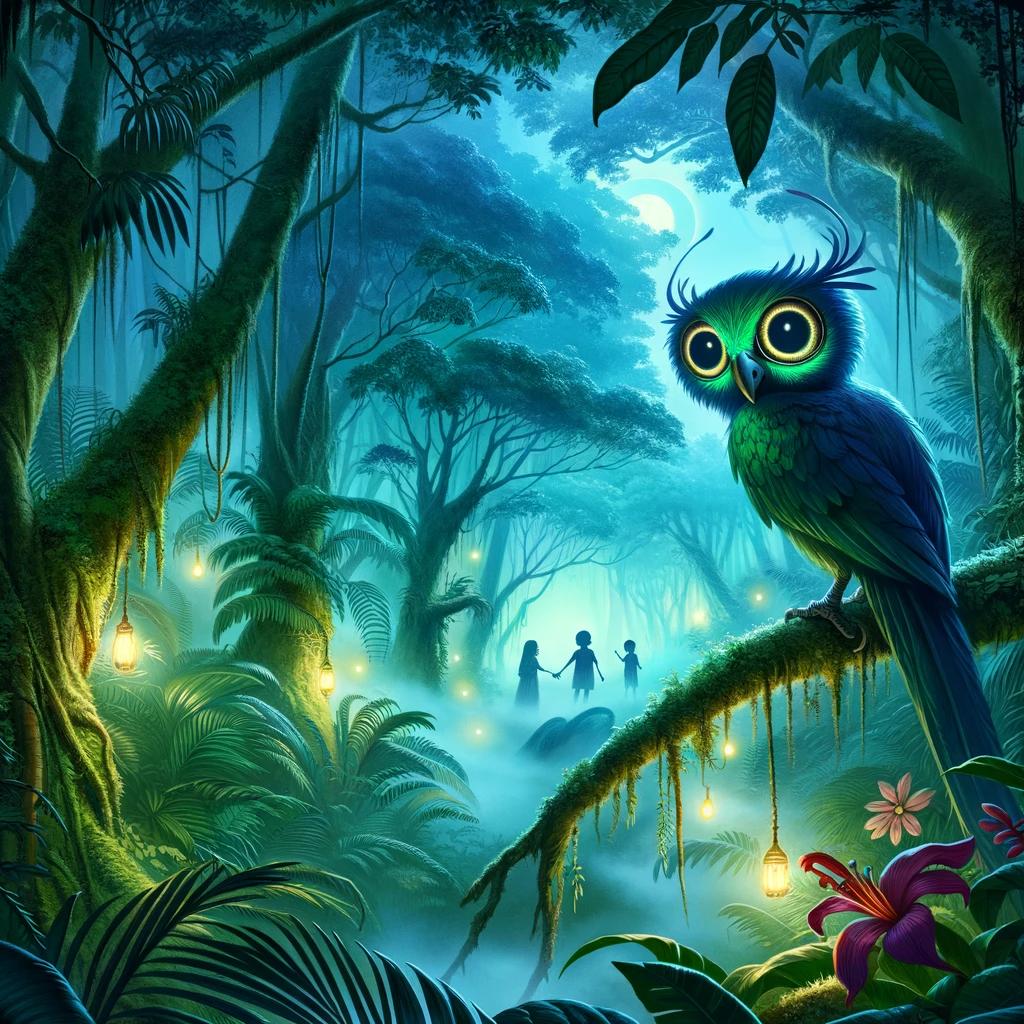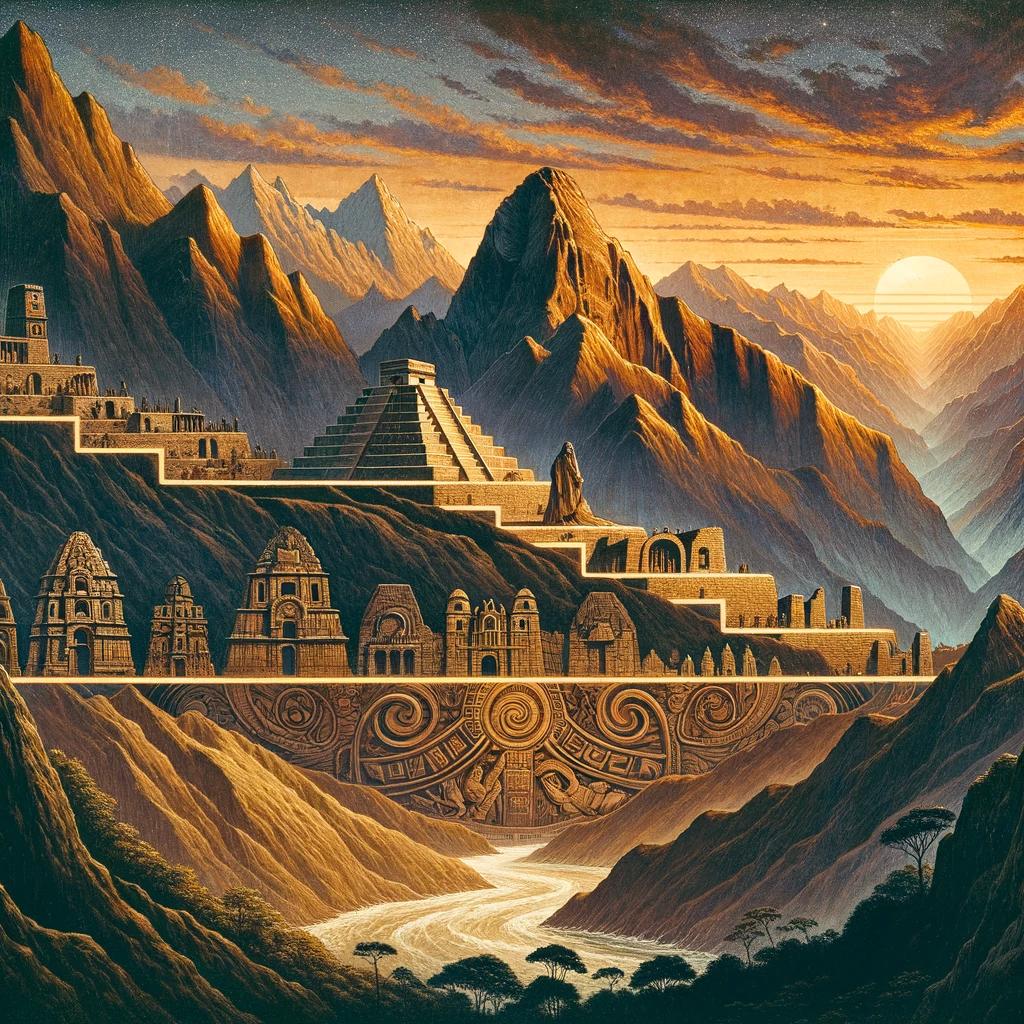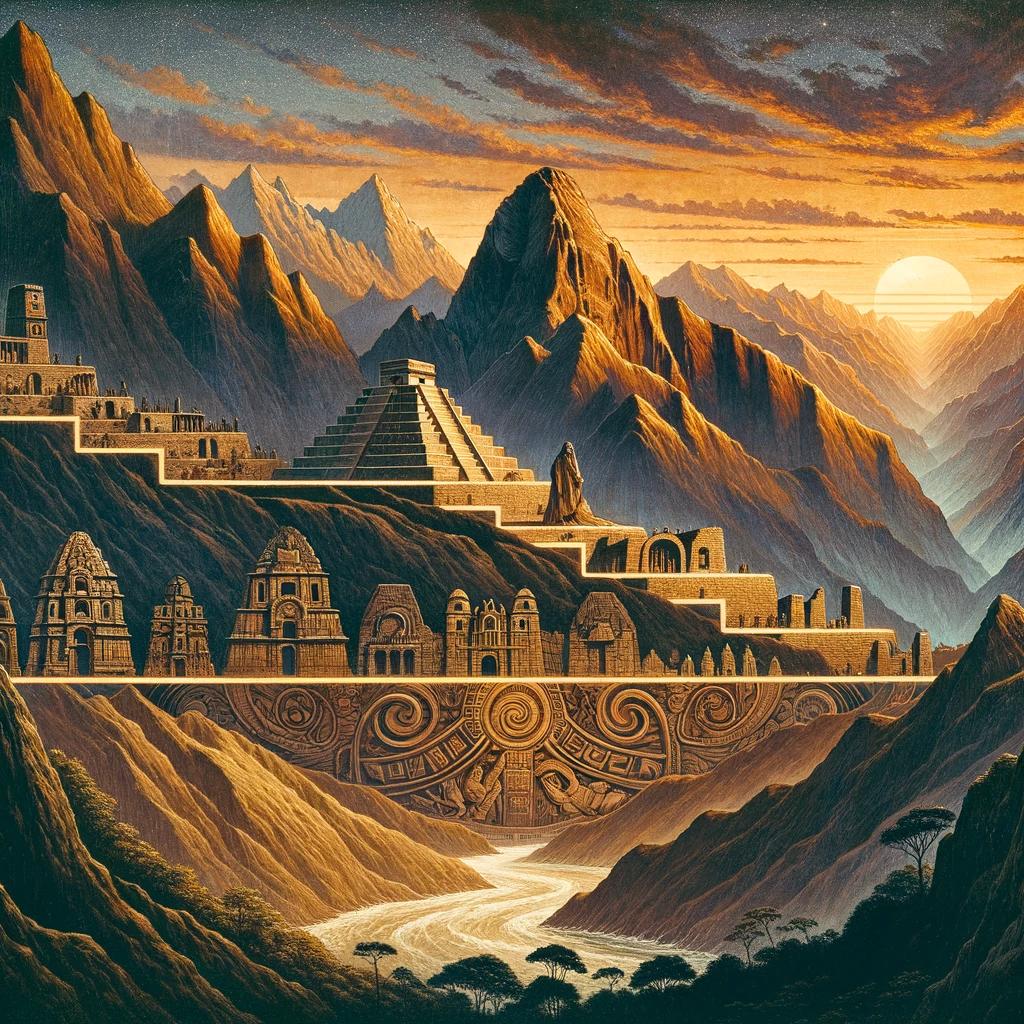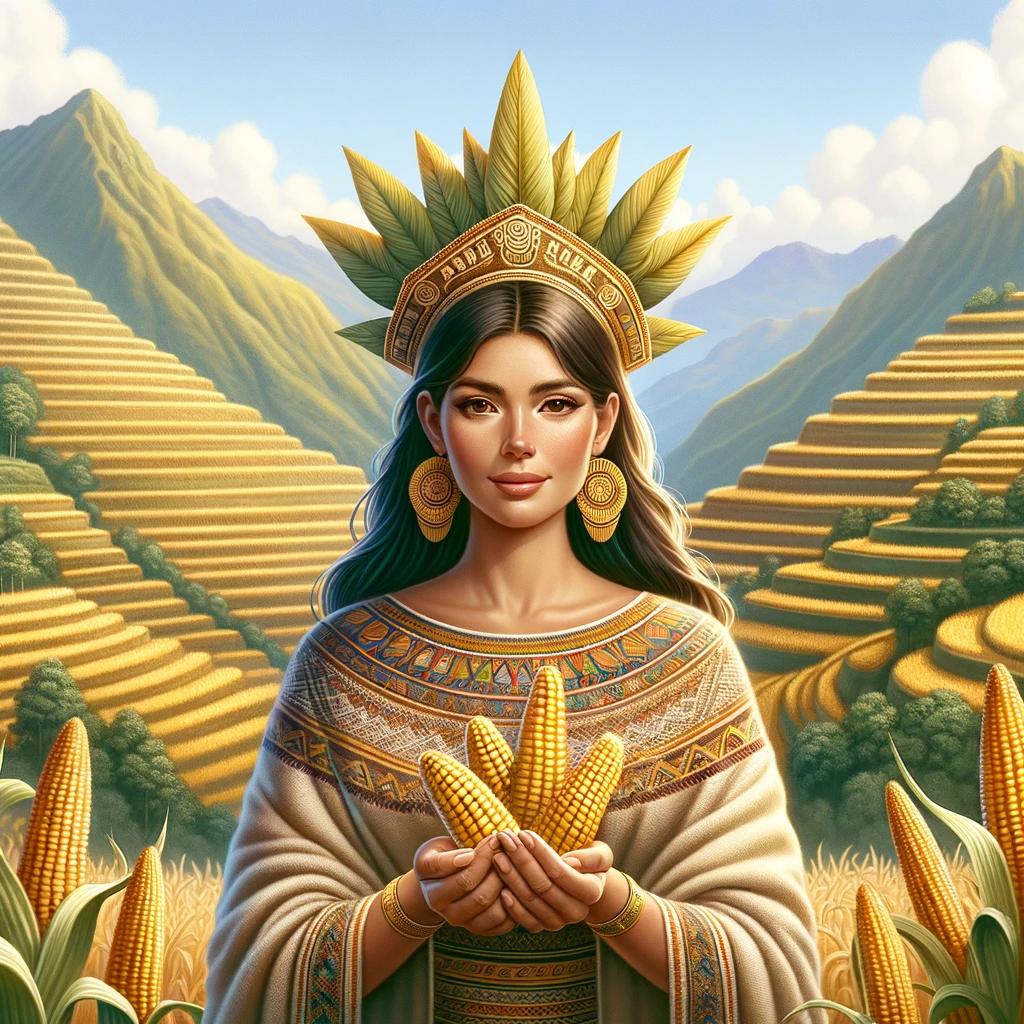Inca Mythology Afterlife: Exploring the Beliefs and Practices of Ancient Peru’s Afterlife Realm
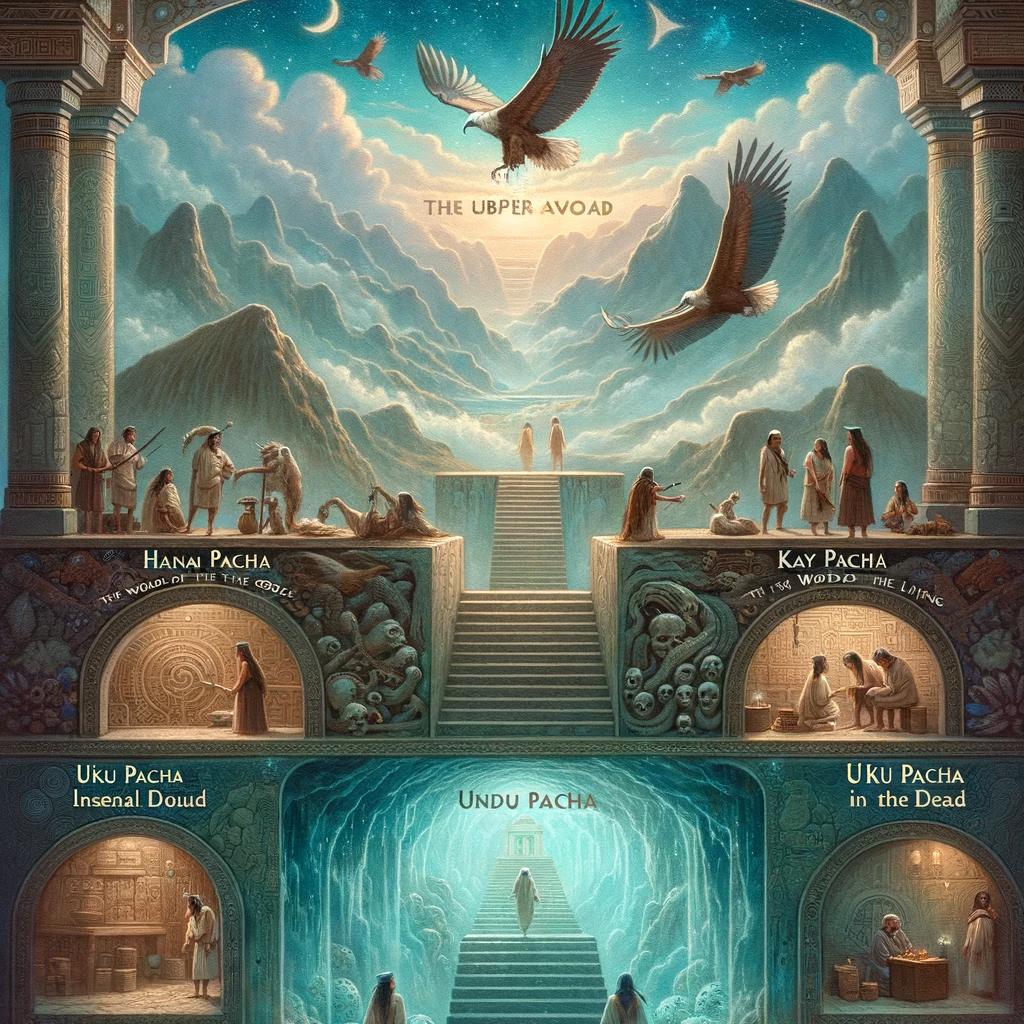
Inca mythology afterlife is a fascinating topic that reveals the beliefs and practices of the ancient civilization in relation to the world beyond. The Incas believed in a spiritual realm and the possibility of reincarnation, where actions in life had consequences.
Rituals, offerings, and ceremonies were performed to maintain a spiritual connection and honor ancestors. Festivals celebrated deities and ancestors through rituals and dances. Spanish conquest greatly impacted Inca mythology, suppressing indigenous practices and imposing Christianity.
Despite this, the study and exploration of Inca afterlife continue today.
Overview of Inca Mythology
Inca mythology encompasses a rich tapestry of beliefs and practices that were integral to the ancient Inca civilization. This overview provides an insight into the fascinating world of Inca mythology, exploring its introduction, origins, influences, and the foundational beliefs and practices that defined it.
Introduction to Inca Mythology
Inca mythology was deeply rooted in the spiritual and supernatural realms, shaping the cultural and religious aspects of the Inca civilization. This section delves into the fundamental concepts, deities, and rituals that formed the basis of Inca mythology, offering a glimpse into their worldview and spiritual traditions.
Origins and Influences of Inca Mythology
The origins and influences of Inca mythology were shaped by a combination of pre-Inca cultures, ancestral traditions, and their unique historical context. This subsection explores the cultural exchanges, mythological adaptations, and societal influences that contributed to the development of Inca mythology as it evolved over time.
Beliefs and Practices in Inca Mythology
Central to Inca mythology were a set of core beliefs and practices that guided the daily lives of the Inca people. This section explores their beliefs in divine beings, sacred rituals, and the interconnectedness of the physical and spiritual realms.
It highlights how their understanding of the afterlife and the consequences of actions in this world shaped their religious practices and moral code.
Inca Beliefs about Afterlife
Inca mythology held profound beliefs regarding the afterlife, exploring the existence beyond death and the implications it had on the living world. This section delves into the various aspects of Inca beliefs about the afterlife, shedding light on their views on life after death, the concept of reincarnation, and the consequences individuals faced in the afterlife based on their actions in life.
Inca Views on Life after Death
The Inca civilization firmly believed in the existence of a spiritual realm beyond death. They embraced the idea that life did not cease with physical demise but continued in another form.
For the Incas, death marked a transition from the material world to the spiritual plane. Although specific details of their perception of the afterlife varied, the core belief in the continuation of existence remained prevalent.
Reincarnation in Inca Mythology
Reincarnation played a significant role in Inca mythology. The Incas believed that upon death, individuals would be reborn into a new life. This cyclic process of rebirth allowed individuals to rectify past mistakes, learn from previous experiences, and evolve spiritually.
Reincarnation served as a means for spiritual growth and enlightenment, emphasizing the interconnectedness of life and the concept of karma.
Consequences of Actions in the Afterlife
In Inca mythology, the afterlife was not merely a continuation of existence but also a realm where the consequences of one’s actions in life played a crucial role. The Incas believed that their actions and behaviors would directly impact their experiences in the afterlife.
Positive actions may lead to rewards and a higher status, while negative actions could result in punishment and a lower status. The concept of judgment in the afterlife, linked to the Inca notion of morality, emphasized the importance of leading a virtuous life.
Understanding Inca beliefs about the afterlife provides valuable insights into their spiritual worldview and cultural practices. These beliefs influenced their rituals, ceremonies, and even daily conduct, reinforcing a sense of accountability and connection with the spiritual realm.
Rituals and Practices in Inca Afterlife
Rituals and practices played a crucial role in the Inca civilization’s belief system regarding the afterlife. These ceremonies and traditions were aimed at maintaining a connection with the spiritual realm and honoring their ancestors.
Offerings to the Gods
The Inca people believed in the active presence of deities in their lives, including the afterlife. They offered various gifts and sacrifices to appease and honor the gods. These offerings often included food, textiles, precious metals, and even human or animal sacrifices.
Through these acts, they sought to maintain harmony with the spiritual world and ensure blessings upon themselves and their communities.
Funerary Rites and Rituals
When someone passed away, the Inca people conducted elaborate funerary rites and rituals. The deceased would be prepared for burial, often mummified and adorned with valuable items. These ceremonies involved chanting, prayers, and the presence of priests.
It was believed that these rituals facilitated the transition of the deceased’s soul into the afterlife and ensured a favorable journey.
Prayers and Special Ceremonies
Prayers held a significant place in Inca afterlife rituals. The Inca people offered prayers to their ancestors, deities, and spirits, seeking guidance, protection, and blessings. Special ceremonies were conducted on specific occasions, such as harvests or celestial events, to express gratitude and reinforce their spiritual connection.
These ceremonies involved dances, music, and communal participation to invoke divine favor and maintain the cosmic order.
Festivals and Celebrations in Inca Afterlife
The Inca civilization embraced various religious festivals to honor their beliefs about the afterlife. These festivals served as important occasions for the community to come together and pay homage to their deities and ancestors.
Let’s explore the significant aspects of festivals and celebrations in Inca mythology afterlife.
Religious Festivals in Inca Mythology
Inca religious festivals were marked by elaborate rituals and ceremonies dedicated to their gods and goddesses. These festivals were often held at specific times of the year and were celebrated with great enthusiasm and reverence.
They provided a platform for the Inca people to express their devotion and seek blessings from the divine entities.
Honoring Ancestors and Deities
One crucial aspect of Inca festivals in the afterlife was the veneration of ancestors and deities. The Inca people believed in maintaining a strong bond with their deceased ancestors and considered them to have a powerful presence in the spiritual realm.
During festivals, offerings were made, and rituals were performed to honor and seek guidance from these revered figures.
Rituals, Dances, and Ceremonies
Various rituals, dances, and ceremonies were an integral part of Inca festivals in the afterlife. These practices were performed to invoke divine blessings, express gratitude, and ensure the well-being of the community.
Colorful costumes, elaborate masks, and rhythmic dances created an atmosphere of spiritual connection and reverence.
The festivals and celebrations in Inca afterlife played a crucial role in reinforcing religious beliefs, maintaining cultural traditions, and fostering community unity.
Through these events, the Inca people sought to establish a harmonious relationship between the mortal world and the spiritual realm.
Deities and Spirits in Inca Afterlife
The Inca civilization believed in a pantheon of deities and spirits that played significant roles in the afterlife. These powerful entities were revered and worshipped through various rituals and ceremonies. Among them were:
Inti: The Sun God
Inti, the god of the sun, held immense importance in the Inca afterlife.
As the source of light and warmth, Inti symbolized life and vitality. The Incas believed that Inti guided souls on their journey to the afterlife, providing them with light and protection.
Worship of Inti involved offerings and prayers to honor his divine presence.
Mama Quilla: The Moon and Marriage Goddess
Mama Quilla, the goddess of the moon and marriage, played a crucial role in Inca afterlife beliefs. She was associated with fertility, harvest, and lunar cycles. The Incas believed that Mama Quilla watched over the souls of the departed, providing spiritual guidance and assistance.
Rituals dedicated to Mama Quilla involved offerings, songs, and dances to honor her divine influence.
Pachamama: The Earth and Agriculture Goddess
Pachamama, the goddess of the earth and agriculture, held immense significance in Inca afterlife beliefs. She was regarded as the mother of all living beings and the provider of sustenance.
The Incas believed that Pachamama governed the cycle of life, death, and rebirth. Rituals and offerings were performed to appease Pachamama and seek her blessings for a prosperous afterlife.
Supay: The God of Death and the Underworld
Supay, the god of death and the ruler of the Inca underworld known as Uca Pacha, played a pivotal role in Inca afterlife mythology. The Incas believed that Supay held dominion over the souls of the deceased, leading them to their final resting place.
Rituals and offerings were conducted to appease Supay and ensure a peaceful transition to the afterlife.
The worship and reverence of these deities and spirits were integral to Inca afterlife beliefs.
They were seen as powerful beings with the ability to influence a person’s journey in the afterlife, providing guidance and protection along the way.
Regional Variations in Inca Afterlife Beliefs
Within the Inca civilization, diverse beliefs emerged regarding the afterlife, reflecting the regional variations across different territories. These variations were influenced by geography and local traditions, contributing to a rich tapestry of beliefs and practices.
Diverse Beliefs Within the Inca Civilization
The Inca civilization was vast and encompassed a multitude of cultures and communities. As a result, there was a great diversity of beliefs surrounding the afterlife. Each region had its own unique interpretations and rituals, shaped by factors such as local customs, ancestral traditions, and interactions with neighboring cultures.
For example, in the mountainous regions, where agriculture and farming were challenging, the belief in the significance of the earth and the fertility goddess Pachamama held a prominent place in afterlife beliefs.
These communities centered their rituals and practices around appeasing Pachamama and ensuring a bountiful afterlife for their departed loved ones.
On the coast, where fishing and maritime activities were prevalent, the influence of marine deities and spirits played a crucial role in afterlife beliefs.
Communities in coastal areas worshipped deities associated with the sea, such as Mama Cocha, the goddess of water, emphasizing their connection to the ocean and its bounty in their rituals and ceremonies.
Influence of Geography and Local Traditions
The geographical landscape of the Inca Empire greatly influenced the afterlife beliefs of its inhabitants. Mountains, rivers, and natural elements held deep spiritual significance, and their presence shaped the local interpretations of the afterlife.
In regions surrounded by towering mountains, such as the Andes, the belief in a direct connection between the earthly realm and the spiritual realm was prominent. Mountains were seen as sacred places, where the spirits of the departed resided.
Ceremonies and rituals were held in mountainous areas to honor and communicate with these ancestral spirits, seeking their guidance and protection.
In contrast, regions situated along coastal areas often incorporated maritime elements into their afterlife beliefs.
The concept of an eternal voyage, where the soul embarked on a journey across the vast ocean, was central to these beliefs. Elaborate rituals and ceremonies were conducted near the sea, accompanied by offerings and prayers to ensure a safe and prosperous passage for the departed.
- Geography and local customs shaped diverse afterlife beliefs within the Inca civilization.
- Mountainous regions emphasized connections with earth and fertility deities.
- Coastal areas incorporated influences of marine deities and the ocean.
- Mountains were seen as sacred places for communication with ancestral spirits.
- Coastal regions held beliefs in an eternal voyage across the ocean.
Understanding these regional variations in afterlife beliefs provides a deeper appreciation for the complexity and diversity of the Inca civilization’s spiritual practices.
Impact of Spanish Conquest on Inca Mythology
Arrival of the Spanish and Religious Suppression
The arrival of the Spanish conquistadors in the Inca Empire brought about significant changes in Inca mythology. As the Spanish imposed their own religion, indigenous beliefs and practices faced severe suppression.
The Catholic Church, acting as an arm of the Spanish crown, aggressively sought to eradicate native religious practices.
Native rituals, worship of deities, and ceremonies were condemned as pagan and blasphemous, leading to the prohibition and punishment of indigenous spiritual traditions.
The Spanish introduced Catholicism, converting the indigenous population to their religious beliefs, and forcing them to abandon their age-old practices associated with Inca afterlife mythology.
Destruction of Temples and Cultural Transformation
As the Spanish conquest progressed, temples and sacred places associated with Inca mythology faced destruction and desecration.
These sites held deep cultural and religious significance, representing the connection between the Inca people and their spiritual world.
Temples dedicated to the worship of Inca deities were demolished, and sacred artifacts were destroyed or looted.
The aim was to eradicate any trace of indigenous religious practices, replacing them with Catholic churches and symbols of the new faith.
This widespread destruction not only had a visual impact, but also severed the sacred ties that connected the Inca people to their mythical past.
It fundamentally transformed the cultural fabric of the Inca civilization and extinguished many ancient traditions associated with Inca afterlife beliefs.
End of Inca Mythology Afterlife as it Was Known
The arrival of the Spanish and the subsequent conquest effectively marked the end of Inca mythology afterlife as it was known. With religious suppression, the destruction of sacred sites, and the imposition of Catholicism, the Inca civilization was forced to abandon its traditional beliefs and practices.
While remnants of Inca mythology and cultural practices may have survived, the overwhelming influence of Spanish colonization reshaped the spiritual landscape and eclipsed the vibrant and complex world of Inca afterlife mythology.
The rich mythology of the Inca civilization continues to leave a lasting legacy in modern times. Despite the impact of Spanish conquest and religious suppression, elements of Inca mythology have managed to endure and captivate scholars, historians, and enthusiasts alike.
The Inca’s beliefs about the afterlife and their intricate rituals have been the subject of extensive study, providing valuable insights into their ancient culture.
Today, the legacy of Inca mythology can be observed in various forms, from cultural celebrations to artistic expressions.
Inca-inspired festivals and ceremonies are still held in some regions, keeping the ancient traditions alive and allowing people to connect with their historical past. Through these events, the complex pantheon of Inca deities and spirits are honored and remembered.
Additionally, the Inca’s reverence for nature and their association with the natural world continues to resonate with modern environmental philosophies. The concept of Pachamama, the earth and agriculture goddess, serves as a reminder of the importance of environmental stewardship and the deep connection between humans and nature.
Continued Study and Exploration of Inca Afterlife
The study and exploration of Inca afterlife beliefs and practices remain ongoing pursuits for scholars and researchers. Archaeological discoveries, sacred sites, and textual sources provide valuable clues into the Inca’s understanding of the journey beyond death.
By analyzing burial sites, funerary objects, and rituals, researchers can piece together a deeper understanding of the Inca’s beliefs about the afterlife.
Furthermore, advancements in technology and research methods have enabled scientists to use innovative techniques such as DNA analysis and ground-penetrating radar to unearth new information about Inca burial customs and rituals.
These discoveries shed light on the intricate intricacies of Inca funeral practices and the significance placed on honoring the deceased.
As the exploration of Inca mythology and the afterlife continues, it offers a glimpse into the spiritual and cultural world of this ancient civilization.
By delving into these aspects, researchers can not only gain a better understanding of the Inca’s beliefs about the afterlife but also appreciate the complexities and nuances of their broader cosmology.
.

